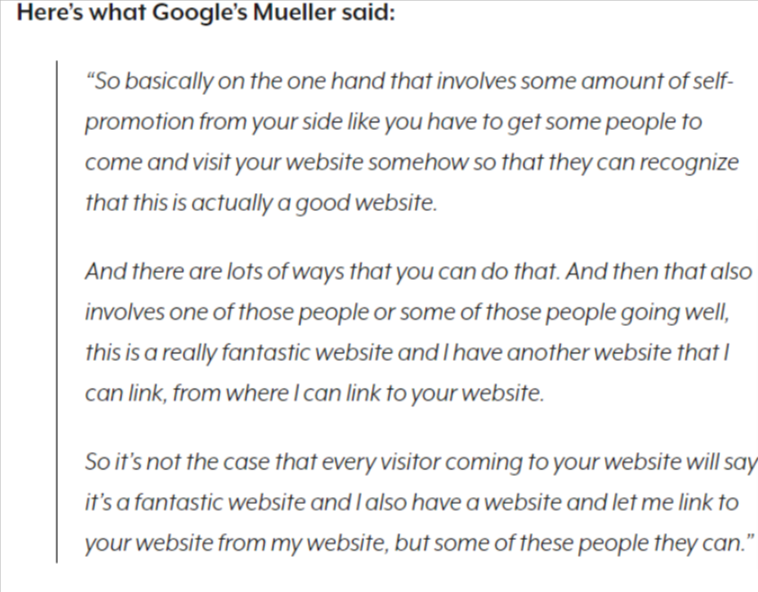
Table of Contents
It’s widely understood that links hold a central role in the field of Search Engine Optimization (SEO). From internal link structuring and optimizing on-page content to the intricacies of link building and securing valuable backlinks, there are numerous avenues to explore for maximizing the impact of your SEO links. However, for many, the initial steps can appear quite perplexing.
This blog post will center on the vital role that links have in SEO, touching upon the types of Links and elucidating their importance in the field of search engine optimization.
What are links?
Hyperlinks, commonly referred to as links, are clickable elements on the internet that enable users to move from one webpage to another. There are different types of Links for websites.
- Internal links: These links connect various pages within your own website.
- External links: These links direct users from your website to external online resources.
- Backlinks: These links originate from other websites and lead to your site.
The presence and management of these links for SEO are essential for optimizing the search engine ranking of your website.
Understanding SEO Link Structure
1. Internal Links
When it comes to internal links, there’s a twofold significance – one that’s evident to most and another that remains somewhat concealed, especially from individuals without prior experience in the realms of SEO and content marketing.
The first advantage is associated with the practice of content interlinking, which leads users through your website organically and encourages them to spend more time exploring it.
Let’s take an example: upon reaching the end of an extensive guide on link building, you can effortlessly direct your audience to another relevant resource, such as a guide addressing email outreach. This provides a fluid and logical progression for your readers.
While the more apparent advantages of interlinking are evident, it’s important to recognize the less conspicuous but equally significant role internal links play in improving your website’s crawlability.
At regular intervals, Google’s web crawlers traverse your website in what is known as the indexing process. Throughout this operation, any freshly created pages or posts are integrated into Google’s index for future searchability.
Pages that make it into this index become searchable and may show up in search results. Conversely, when your pages aren’t part of the index, they are effectively concealed from potential searchers.
What are some strategies to enhance your webpage’s structure for better search engine optimization?
There are several methods to enhance the crawlability of your internal site structure.
The initial step involves ensuring that every one of your web pages receives a sufficient number of internal links. There is no universally defined “fundamental guideline” for this, and Google itself does not provide a specific number; rather, it should be a reasonable and balanced amount.
Our experience has shown that, as a rule of thumb, it’s typically effective to have around five internal links pointing to each of your blog posts.
There are two kinds of links that you should refrain from using: homepage links and sitewide links. The reasoning is clear-cut: your homepage is accessible from any other page on your website, and the link to your contact page is typically available in the footer, making any additional links to these pages redundant.
Generally, it’s a wise practice to steer clear of linking to pages that are already conveniently reachable via your navigation menu. Instead, prioritize creating deep content links to promote a seamless traffic flow and improve accessibility for search engine crawler bots.
This represents only one case of utilizing a relevant anchor text when creating an internal link.
Another method to guarantee that Google’s web crawlers can reach your pages is by providing a sitemap.Think of a sitemap as a blueprint that provides search engines with a clear understanding of your website’s organization. You’ll find various sitemap generator tools that can assist you in creating this essential resource.
Once you’ve created your sitemap, don’t forget to submit it to Google Search Console. Additionally, when you publish new pages, you can take the initiative to manually submit them to GSC.
Even if you’ve implemented a sitemap and taken the time to manually index your pages, it’s still crucial to pay attention to your internal link arrangement.
Improving user satisfaction on your website entails the practice of interconnecting your web pages. Furthermore, staying on top of routine link audits and promptly rectifying broken links is paramount. These elements are essential for effective SEO management and the continuous upkeep of your website.
Ready to Chat About
Mastering SEO Links: The Key to Online Visibility
Drop us a line today!
2. External Links
Using external links in SEO in their content is a contentious topic among many bloggers, and their perspective is relatable. Who wants to steer their website’s traffic elsewhere when the primary purpose of running a website is to amass and retain visitors? It’s essential to keep your audience engaged and on your site.
Nevertheless, in the complex landscape of search engine optimization, things are rarely as clear-cut as they appear at first glance.
In the world of search engine optimization, it’s commonly acknowledged that incorporating links to reputable sources is a sound strategy. It’s a smart move to reference current research findings and well-crafted guides produced by other professionals in your niche.
Keep in mind the websites you’re referencing and the quantity of outbound backlinks you’re dispersing.
Can linking to external websites hurt your SEO rankings?
Yes, they can.
They can tackle the task in two different manners: the first one is clear and self-evident, while the second approach is less intuitive.
While it’s well-known that linking to untrustworthy sites should be avoided, it’s worth noting that even if you’re exclusively linking to high-quality resources, an overabundance of external links can substantially slow down your website’s development.
While linking to other websites extensively may not result in penalties, it’s vital to have a clear understanding of the mechanics behind how links function.
They convey ranking signals, particularly link equity, from one site to another. This is a term commonly known as “link juice” within the SEO community.
Picture your website as a vessel. Each incoming link functions as a contribution, adding a drop of link juice to your vessel. Conversely, each external link you provide to an external source serves as a leak, causing a gradual outflow of that link juice.
When link building is a major focus of your SEO strategy, you’ll see a significant effect. The presence of too many external links on your website can seriously hamper your link-building efforts because it essentially redirects the PageRank you’ve accumulated to other websites.
This highlights the necessity of instituting a policy regarding outbound hyperlinks. A good practice is to cap the number of outbound links from a single page at a maximum of 10.
Paid links are considered a major no-go and should be steered clear of at all costs.
Tools like Ahrefs and Google Analytics can help you gauge the impact of your link-building endeavors. If you detect a stagnation or decline in your website traffic, it’s time to review and potentially remove some external links from your site.
3. Backlinks
When it comes to optimizing your website’s search engine performance, backlinks are often regarded as the most potent factor. Having a robust network of inbound links from various reputable sources can significantly enhance your website’s SEO prospects.
Backlinks come in various forms, but the most valuable are the editorial links integrated into other individuals’ blog posts. It’s essential to recognize, though, that even comments on blogs or references in social media posts can be categorized as backlinks, albeit falling on the lower end of the quality spectrum.
We’ve covered the technical aspect of backlinking and its role in PageRank distribution. Now, let’s discuss the practical benefits of having a multitude of backlinks.
Links are crucial aspects in SEO.
When it comes to ranking web pages in search results, Google’s algorithm considers your backlink profile as well. Backlinks are essentially regarded as virtual “votes” by search engines.
The quantity of valuable links pointing to your blog plays a crucial role in indicating to Google and other search engines that your content is both comprehensive and of superior quality. The more links you acquire from highly authoritative sources, the greater your prospects for securing a top-ranking position in search results.
In addition, when your website enjoys a more robust backlink profile than other businesses, they will find it challenging to outdo your ranking until they are able to build up a similar volume of backlinks for their own website.
What Qualities Define a High-Quality Backlink?
Backlinks are not uniform in their contribution to link value, and those originating from spammy sources can potentially hinder your technical SEO efforts. Consequently, it becomes imperative to discern the characteristics of a beneficial backlink.
There is no one-size-fits-all answer to this question, as the characteristics of a good backlink can vary depending on the specific website and the audience it caters to. Nevertheless, there are several factors that could result in inbound links being deemed valuable, including…
- The authority and relevance of the website to the linked subject matter
- The caliber and value of the content found on the site.
- The reputation and dependability of the website.
- The number and excellence of inbound links pointing to the website.
- The website’s tenure and history on the internet.
- The site’s physical location, especially if it’s in a populous country like the United States.
- The location of the link on the webpages.
- Ensuring that the anchor text is relevant to the linked content.
John Mueller from Google suggests that the most effective type of backlink is one where someone endorses your content because they genuinely believe it’s outstanding.
How can you obtain these valuable links? Google’s Webmaster Guidelines classify any form of link exchanges or purchasing of backlinks as a “link scheme.”
Furthermore, it’s mentioned that it’s perfectly within the guidelines to approach bloggers and make them aware of your recently published material.

Low-Value SEO Backlinks:
- Links that have been generated by users.
- Directory-related links, spanning local directories and industry directories.
- Links that emanate from specialized forums within a particular niche.
- Instances where multiple links stem from the same domain.
- NoFollow links that don’t pass SEO authority.
- Links located within video descriptions on platforms like YouTube or on various social media platforms.
Despite their limited impact on SEO, there are reasons to consider having these links in your backlink profile.However, it’s important to emphasize that the most valuable backlinks are the ones you proactively obtain through manual outreach efforts – these are often referred to as editorial links.
How to Build Links?
- Create High-Quality Content
- Do proper Keyword Research
- Work on On-Page SEO
- Promote content on various social media platforms
- Guest Blogging
- Personalized Outreach and Email Marketing
- Broken Link Building ( Use tools like Check My Links or Broken Link Checker to check broken links)
- Local Citations
Conclusion
An ideal link profile for any website includes well-structured internal links, a variety of external links leading to other sites, and a substantial number of backlinks from highly authoritative sources.
Originally created as an email solution focused on acquiring manual outreach links, Shrushti Digital Marketing can assist you in automating the most tedious aspects of this task, significantly boosting the productivity of your link-building initiatives.
About the Author
My name’s Semil Shah, and I pride myself on being the last digital marketer that you’ll ever need. Having worked internationally across agile and disruptive teams from San Fransico to London, I can help you take what you are doing in digital to a whole next level.



